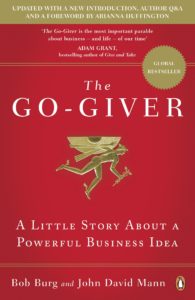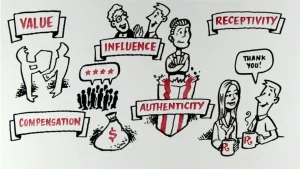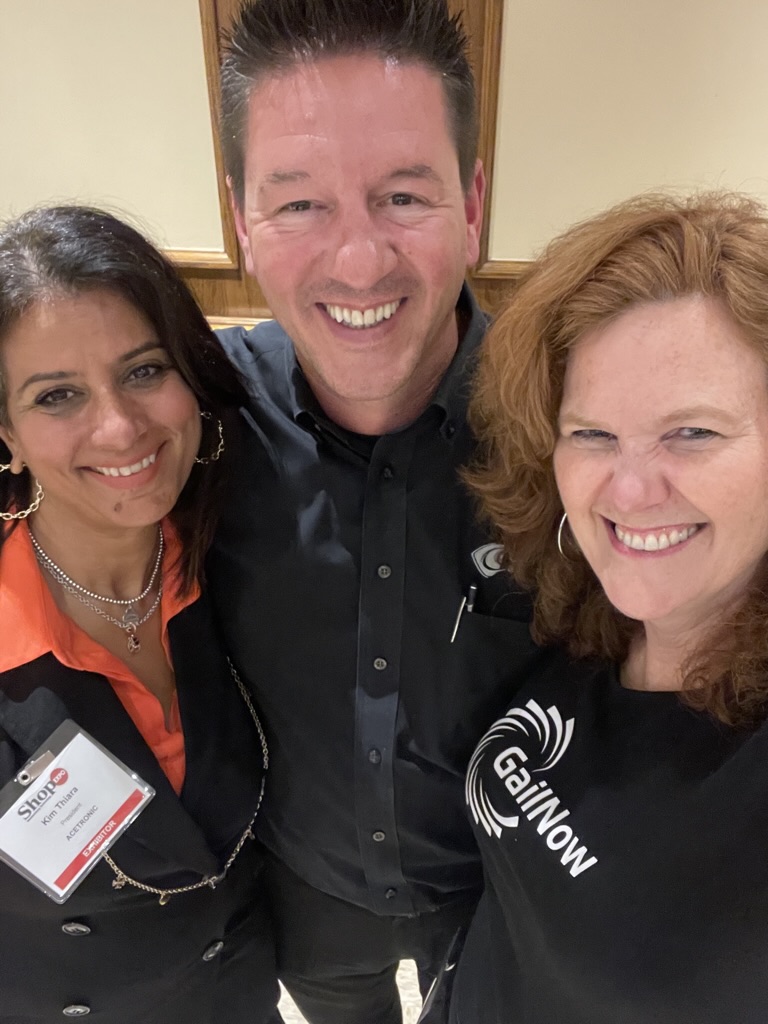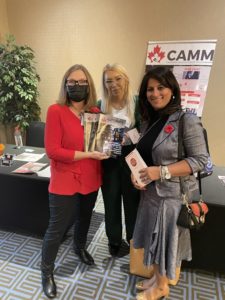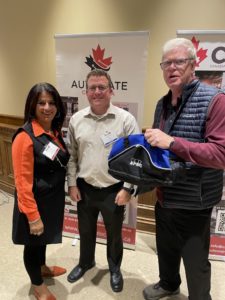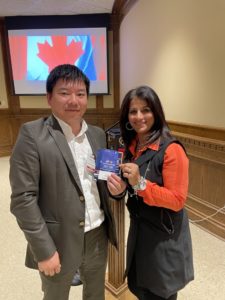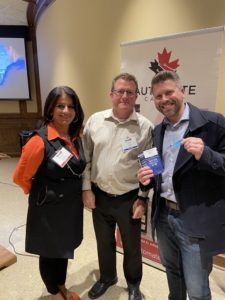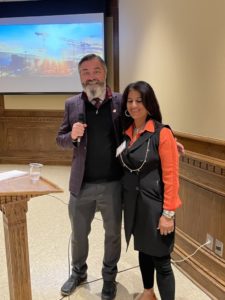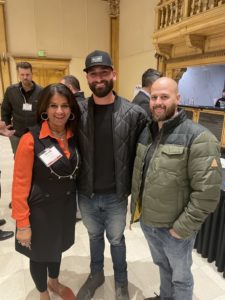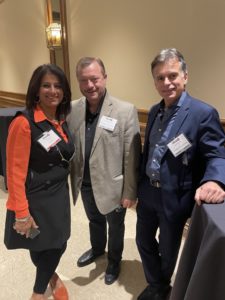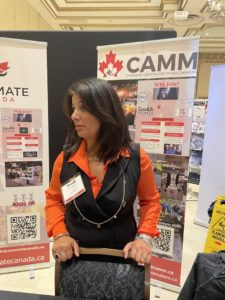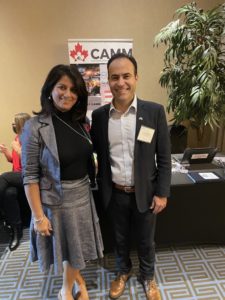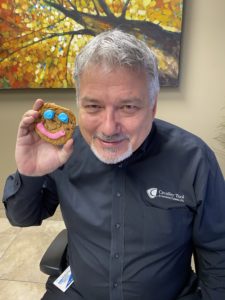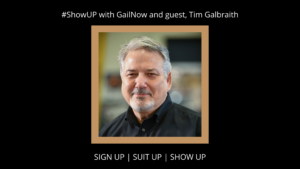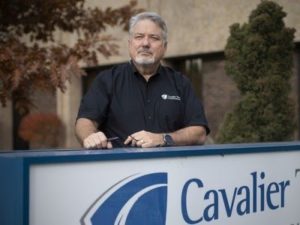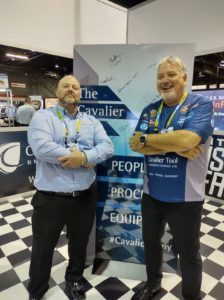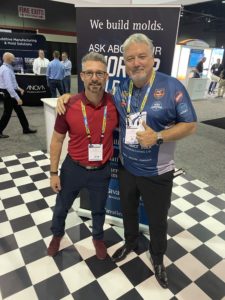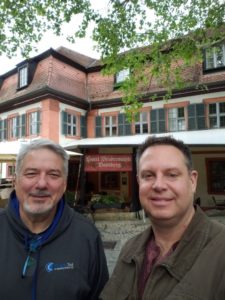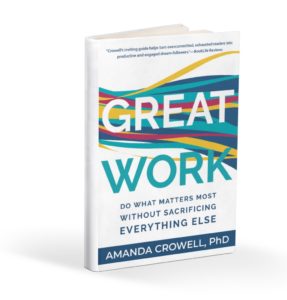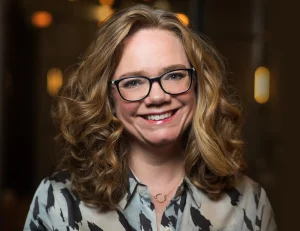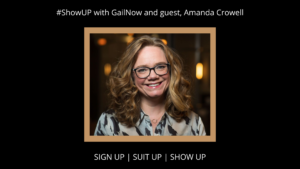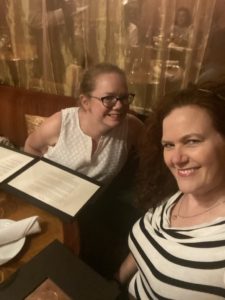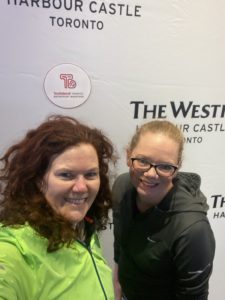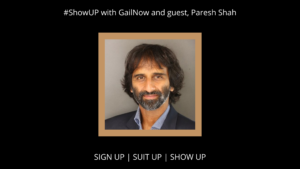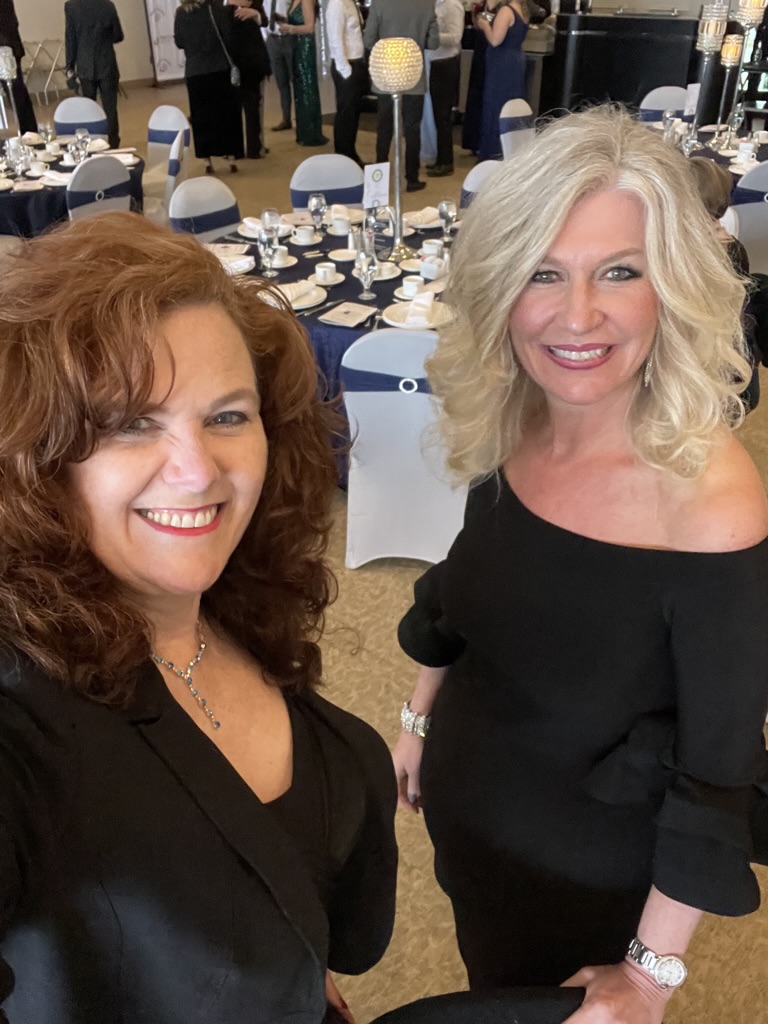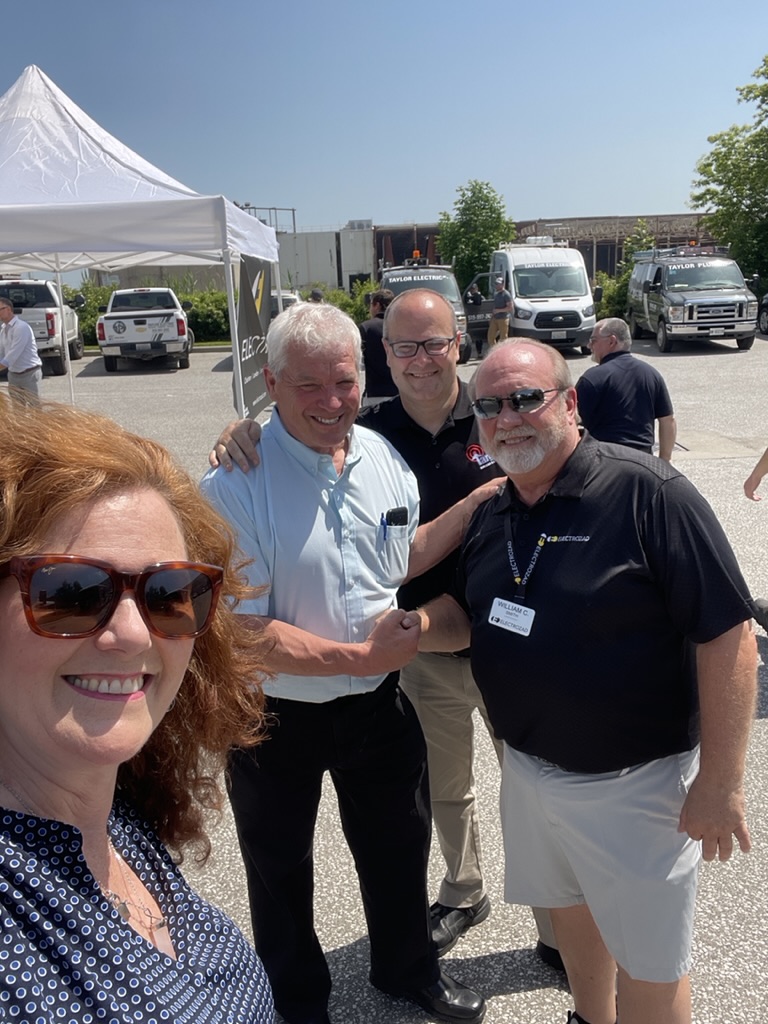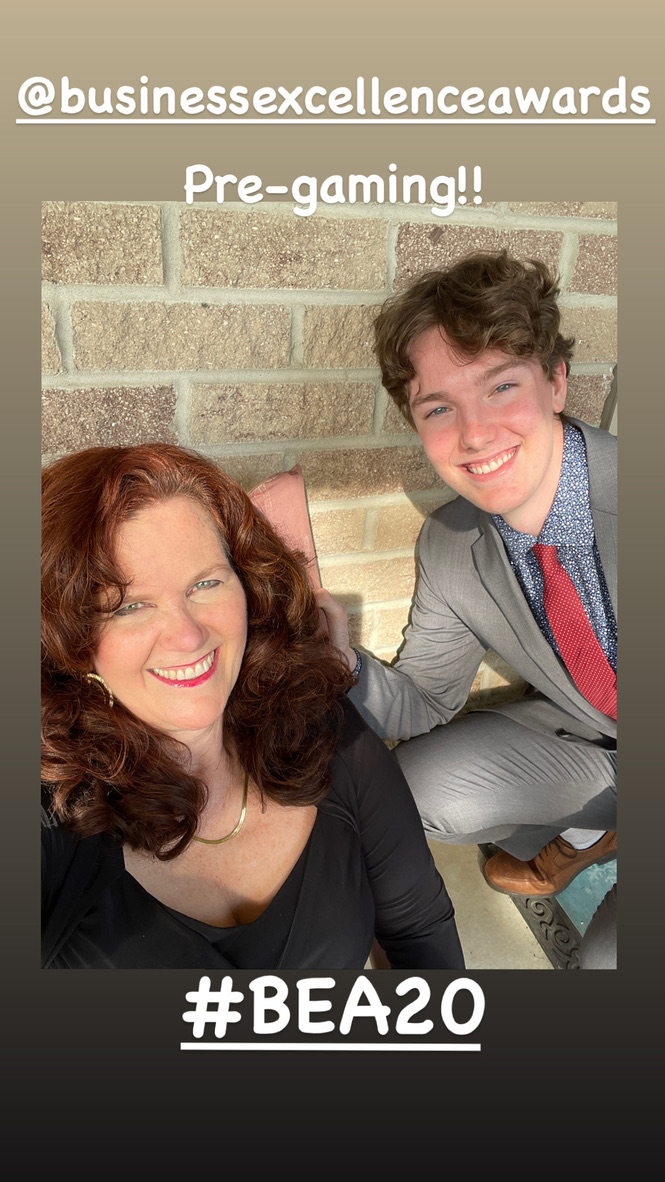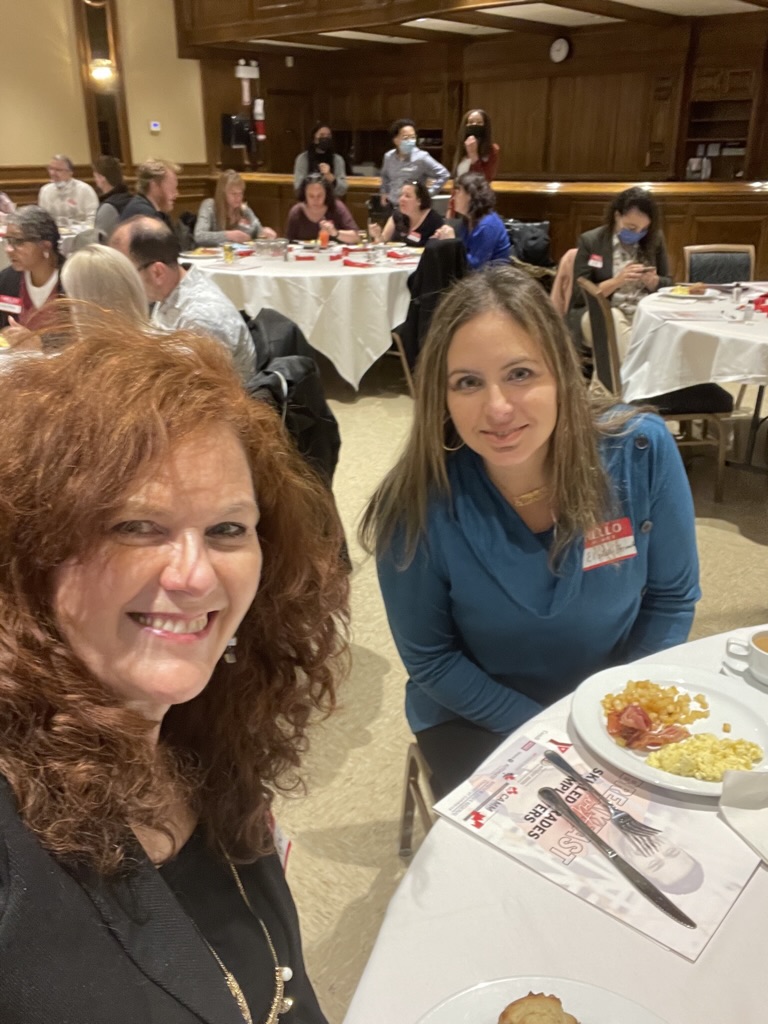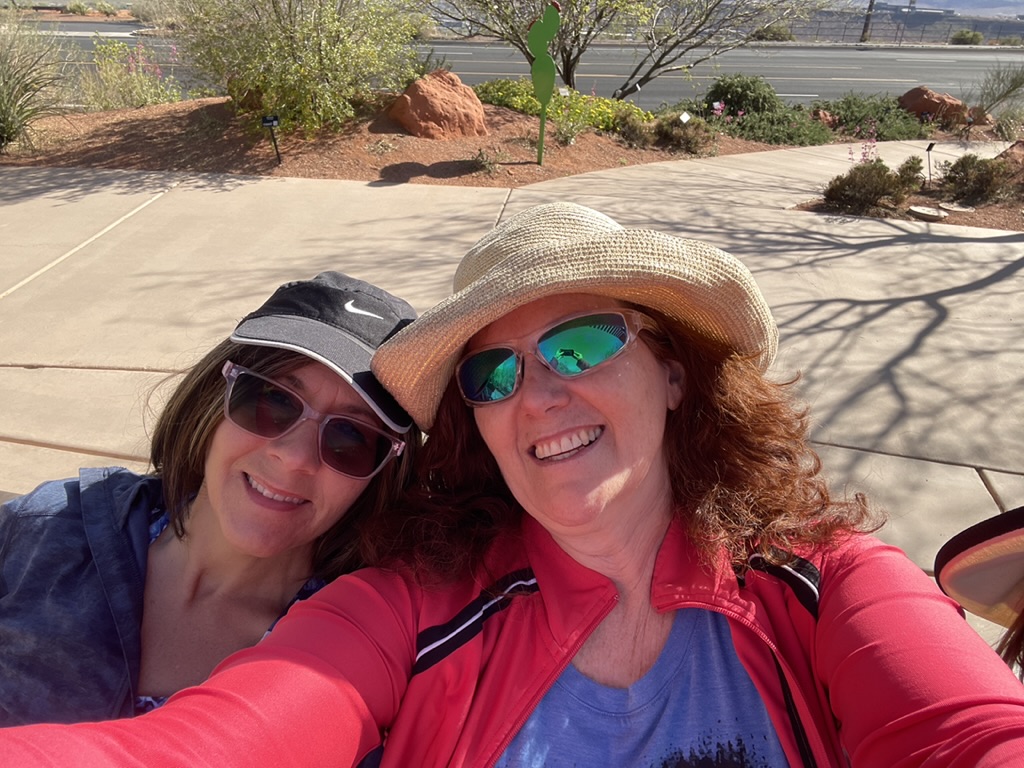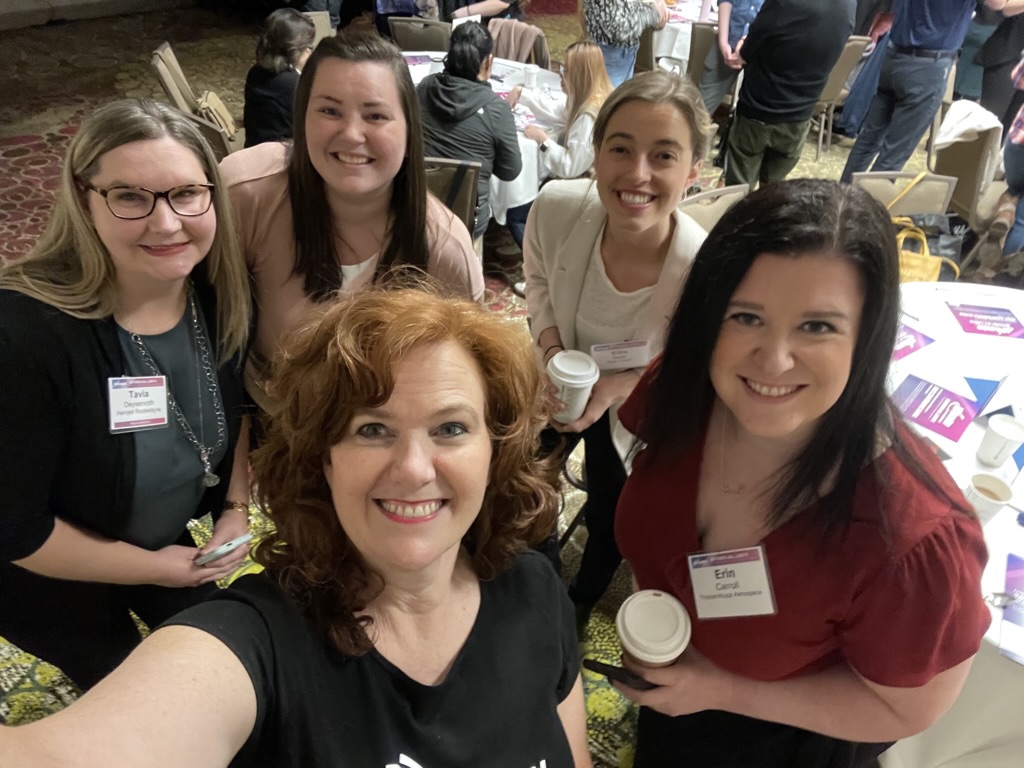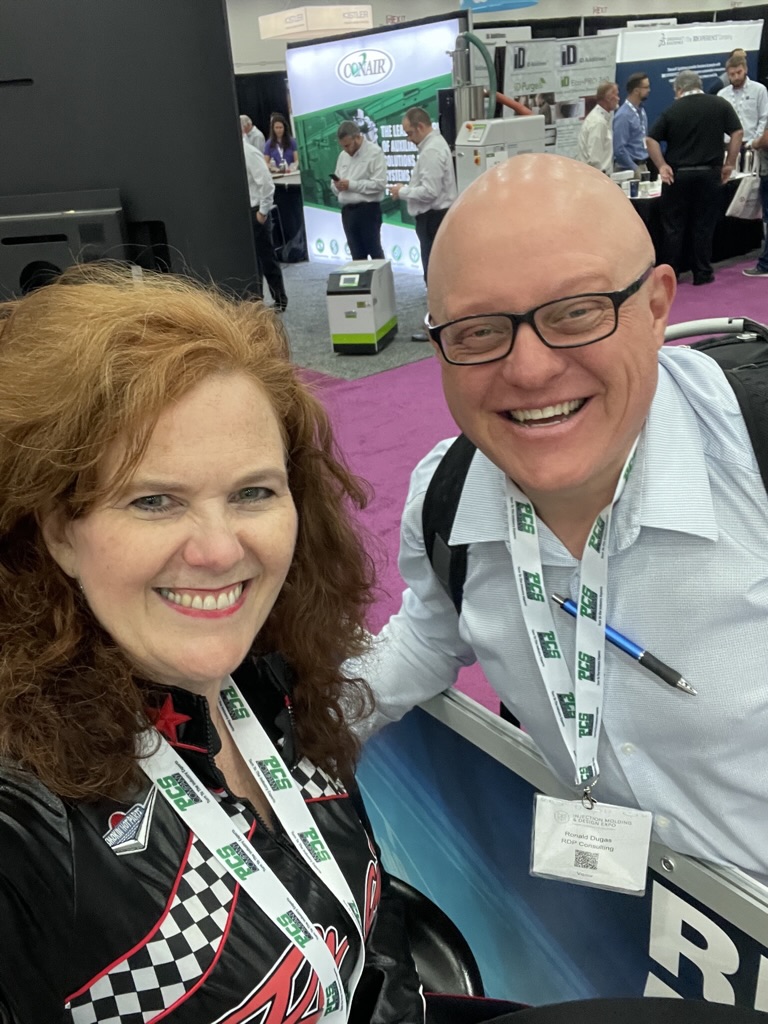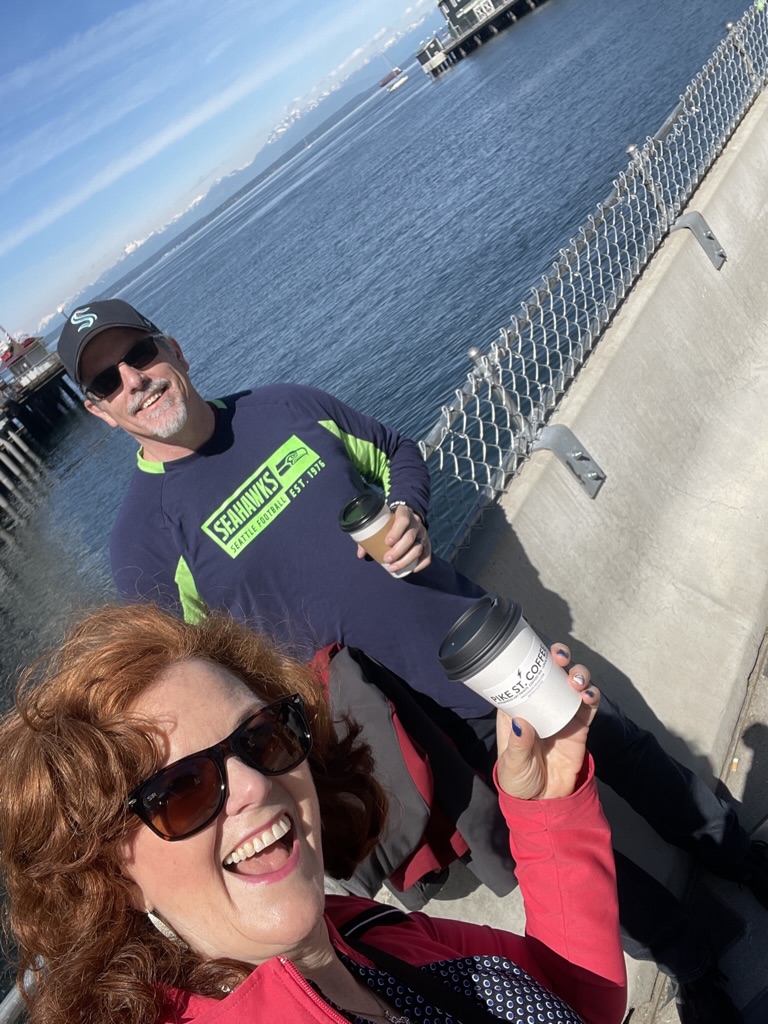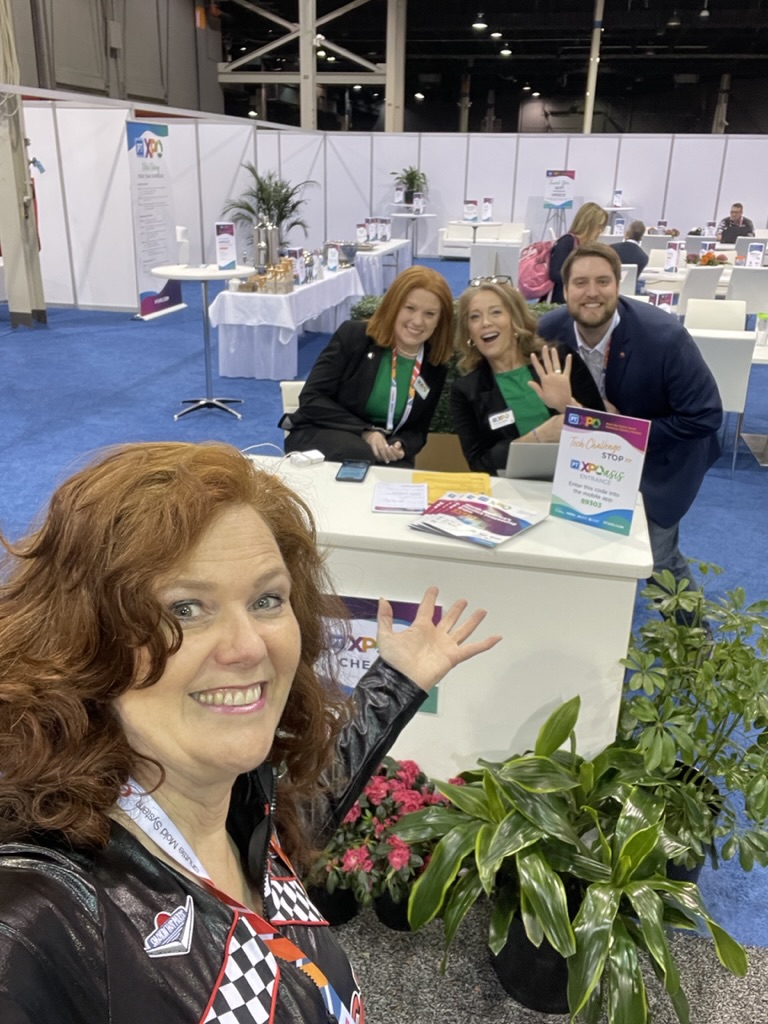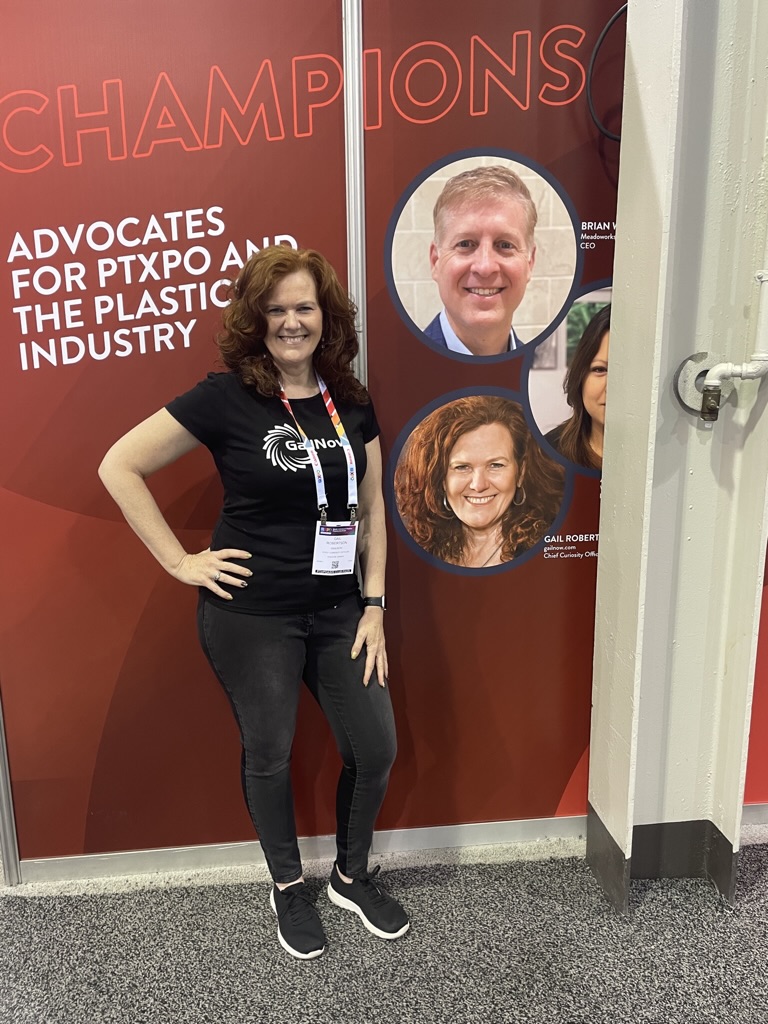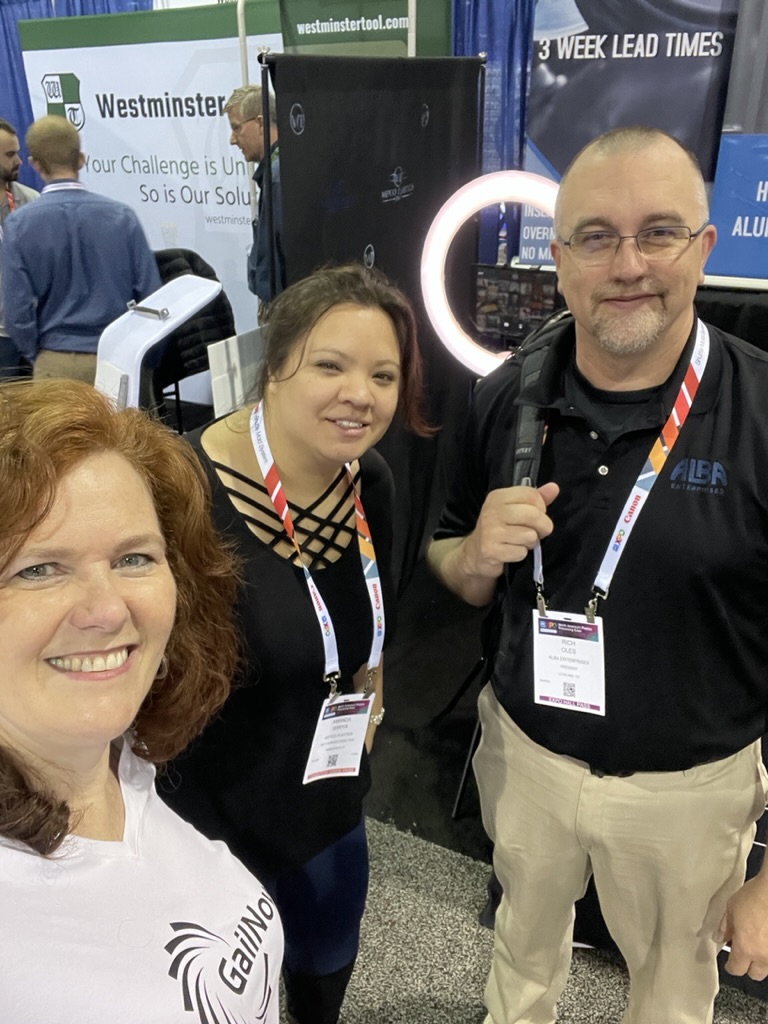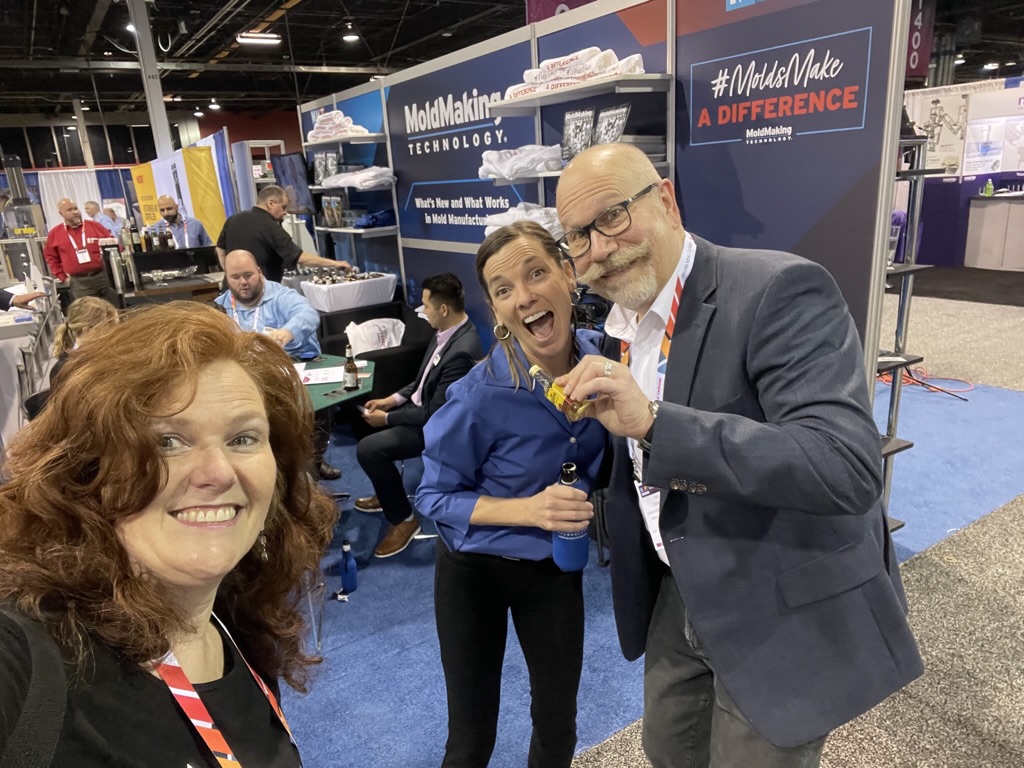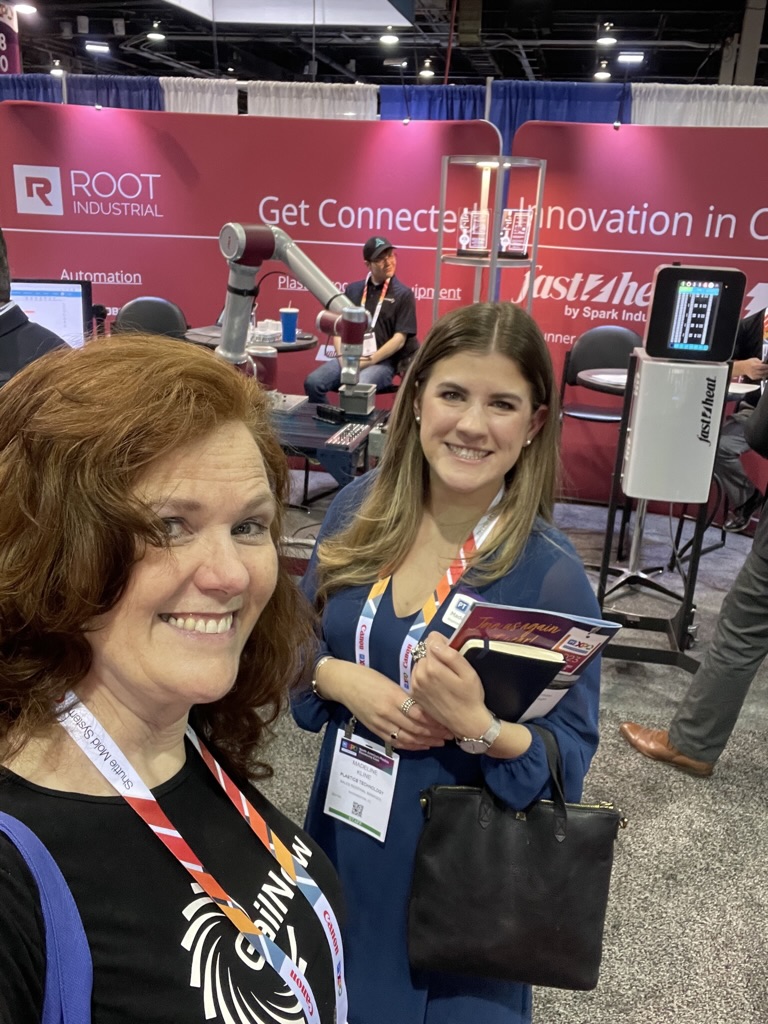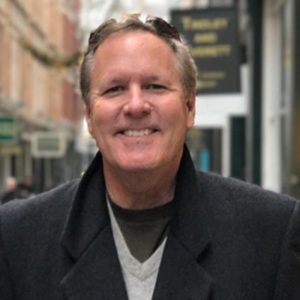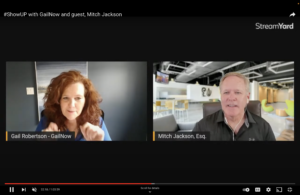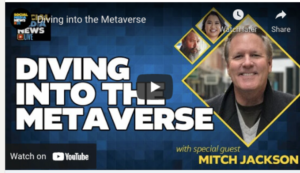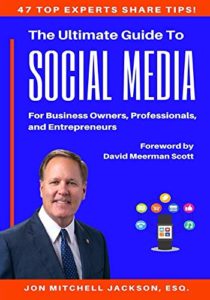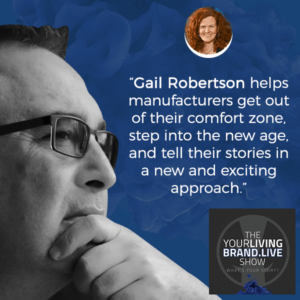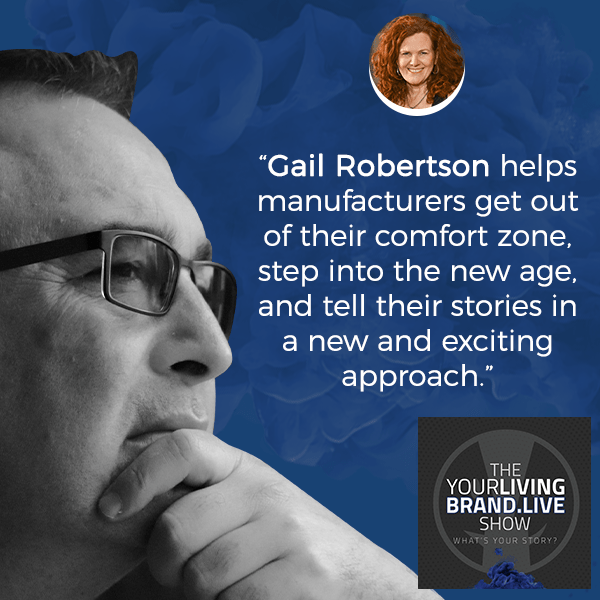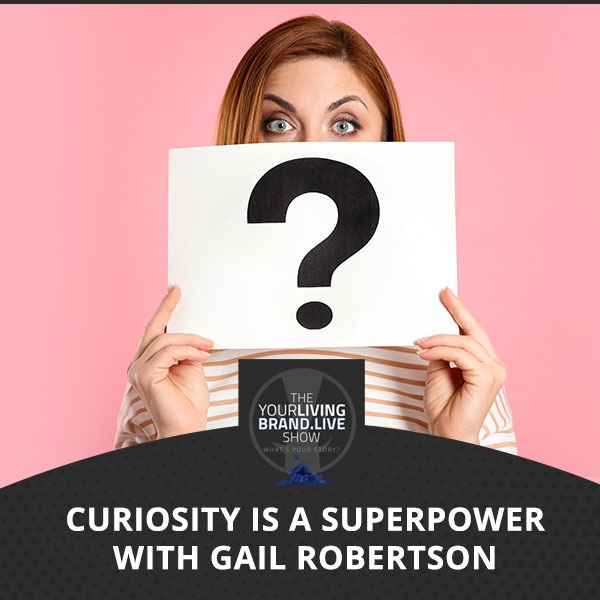In the world of marketing, there are always new platforms and strategies being professed as the next “big thing”.
It is not feasible to keep up with all of them, but every once in a while, one comes along that actually provides the results that they all profess to have. When that happens, it is important to get on board and bring your business forward.

Ingor van Rooi, Connection Catalyst
Social media is one of those things. It has been here for quite some time, but often the advantages are missed or worse, overlooked by many in manufacturing and frankly, in business overall.
That is why getting help is so important; just as you seek help for IT, for Human Resources, for purchasing new equipment or exploring a new process.
So, why is social media not only important, but vital for business as we head into 2023?
First, it gives companies a way to connect beyond one-on-one, to one to many with its ideal audience and foster those audience members into customers.
It moves beyond local to national and international; and no flights, passports, visas are needed.
Social media can help generate brand awareness, leads and sales.
Here are 3 reasons why social media is important as listed by WebFX:
- By marketing to users who already follow your company’s social media accounts (and therefore are already fans of your company), you know that you are reaching a qualified demographic and thus generating qualified leads.
- Social media marketing allows an individual / company to connect with people / other companies with whom they share interests, building a community. In communities sharing is encouraged, which can have a huge impact on your business. Social media is important because it makes it easy for your followers to share your promotions and content.
- Social media allows people to get to know about your brand, as a business. It therefore builds brand awareness and once a relationship is established, brand loyalty, as well.
Recently, on my live show, #ShowUP with GailNow, I interviewed Ingor van Rooi. She is known for her love of people, seeing them flourish, as well as her work to help others get started with building their community on social media, especially LinkedIn.

In the business world, LinkedIn is a must-have for anyone deciding where to start to build a base.
van Rooi has successfully helped entrepreneurs and manufacturers to optimise their profiles on the platform and understand how to genuinely build relationships through interacting with others via direct messages, engagement, sharing of content and working together, maximising on each others’ strengths.
She teaches her clients to show up on social media by building community and embracing her 3 pillars: connect, communicate and collaborate. Through really implementing these concepts, Ingor’s clients have been able to build relationships and community, increase the engagement on their content (some by 500-600%), be exposed to new ideas, gain opportunities and evolve as people.

Ingor is originally from South Africa, where they speak about a concept called Ubuntu. This concept has been widely spoken about all over the world and is very close to her heart because of her love for people. It is the concept of Ubuntu that has helped Ingor build her community of friends on LinkedIn and other social media platforms.
According to Wikipedia, Ubuntu is sometimes translated as “I am because we are”, or “humanity towards others”. In Xhosa (a language native to South Africa), the latter term is used, but is often meant in a more philosophical sense to mean “the belief in a universal bond of sharing that connects all humanity”.
During the show she and I spoke about the importance of social media in business as we know it today, as well as why it is important for manufacturing companies to be on LinkedIn and the pillars she teaches her clients to help them show up on the platform.
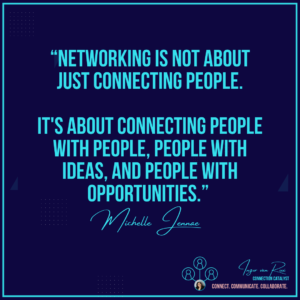
Ingor shared a few staggering statistics that should motivate any company to build out their profile and begin sharing, even if only once per month. Here are a few that stats that were mentioned during the show:
- LinkedIn is the most trusted social media platform
- There are more than 800 Million Users on LinkedIn
- 4 out of 5 of these users are decision makers (i.e. C-Level executives in companies)
- Only 5.2% of all the people that use LinkedIn share content, so if you do, you will stand out (this also means that the rest of LinkedIn’s users are lurking and seeing the content shared)
She shared an interesting analogy with us regarding lurking on LinkedIn, “I think that having a LinkedIn account, and just lurking, you can equate it to deciding to go to a trade show and just standing against the wall and watching everybody talk and network. That’s basically what you’re doing. It’s almost pointless, to go to a trade show, invest your time, make the effort to go there and then just stand and watch everybody else make those connections, network, talk to each other, and probably do business together, too. Right? So that’s what you’re doing when you show up on LinkedIn and all you do is scroll.”
As we know and has been shared by many, people do business with people, especially ones they know, like and trust.
Ingor and I also spoke about how it is important to build the KLT (Know, Like, Trust) Factor. In a recent article shared on Jessica Thiefels Consulting (a content marketing company) website, the “know like trust” (KLT) factor is a marketing concept that is becoming more and more important. The goal is to get your audience, prospects, leads, customers, or clients to understand and eventually believe in your brand.
In simple terms, someone first needs to get to know the “you” behind the brand, which conversely drives connection and familiarity. This familiarity (or knowing) is imperative according to the Gustavson 2021 Brand Trust Index, because “Consumers tend to gravitate to ‘familiar’ brands in 2021 because of the peace of mind they provide.”
According to an article on the website of the Content Marketing Institute, this kind of “Knowing” is not surface knowledge where people have seen your name, logo, brand, or content. In that kind of knowing, people recognize you and know you exist. You’re not a total stranger. They know about you or at the very least, of you. The kind of knowing you want – the kind that opens up greater possibilities for stronger relationships that can lead to sales – is deeper – the kind of knowing that follows when someone shares private details and understands who you are at your core or foundation.
Ingor also pointed out that it is important to show up online (and in real life) with authenticity; making sure that what we share is true and consistent with what is known about us everywhere. Of course, we get to choose how much we share, but it is important to make sure that what we share is real. She went on to quote Dr Seuss from his book, Happy Birthday to You, “Today you are you that is true then true. There is no one alive who is youer than you.”
She also spoke about ensuring that we engage in the content shared by others, answering comments on your own content, messaging in the DMs and also connecting offline with authenticity. She said that showing up on LinkedIn and not doing that would be like walking around in your neighbourhood wearing earphones, not looking at people, not greeting them when you pass them, focused on getting home and getting to work and getting home and getting to work and really not building those relationships. Then needing something like salt at 10:00/11:00 pm when stores are closed and having no option because we have no relationships with our neighbours.
Something else she spoke of is that building relationships online is important because it helps one learn about different things. She shared that interacting with others on social media and in person exposes us to different kinds of people, people that have different backgrounds to you, people that have different experiences than you have. When you are exposed to those people you actually grow as you learn more.

Ingor and I also shared a bit from the 4th annual Algorithm Research Report for the platform recently released by LinkedIn expert Richard van der Blom. This 57-page report comes from the analysis of nearly 10,000 posts over 4 months, and reveals statistically significant patterns in the current behaviour of LinkedIn’s algorithm.
Something that is mentioned in the report that we highlighted during our conversation was that the engagement on a post in the first 90 minutes is usually important to kickstart the growth. Here are some other items listed in the report to help increase engagement is as follows:
- Increase followers (in Creator Mode); they are included in your first batch
- Get more people to ring your bell, so they get notified
- Respond to all comments with your own comment in these first 90 minutes
- Tag or notify people that you want to engage on your post
Here are a few of Ingor’s favourite tips on LinkedIn and also shared in the aforementioned report:
- Make it personal
- Post frequently, but moderately!
- Nurture your own posts for better results
- Creator Mode will grow your followers and reach
- Avoid negative engagement on your posts
- Be consistent
All this to say, being on social media is important for any business, even those in the manufacturing industry!
Why?
As I often say, “If a tree falls in the forest, and no one documents it, no one talks about it. Did it happen?”
Manufacturers NEED to be on social media, especially LinkedIn (as that is where their prospects are) to build that KLT, help their brand awareness to grow and then build their brand loyalty so that they can turn strangers into customers.
Interested to find out more about our conversation? Read the transcription below or watch the replay here.
Connect with Ingor here.

#ShowUP with GailNow and guest, Ingor van Rooi
Thu, Dec 01, 2022 3:53PM • 1:03:22
TRANSCRIPT – From Otter.Ai
(Direct transcription- non-edited version)
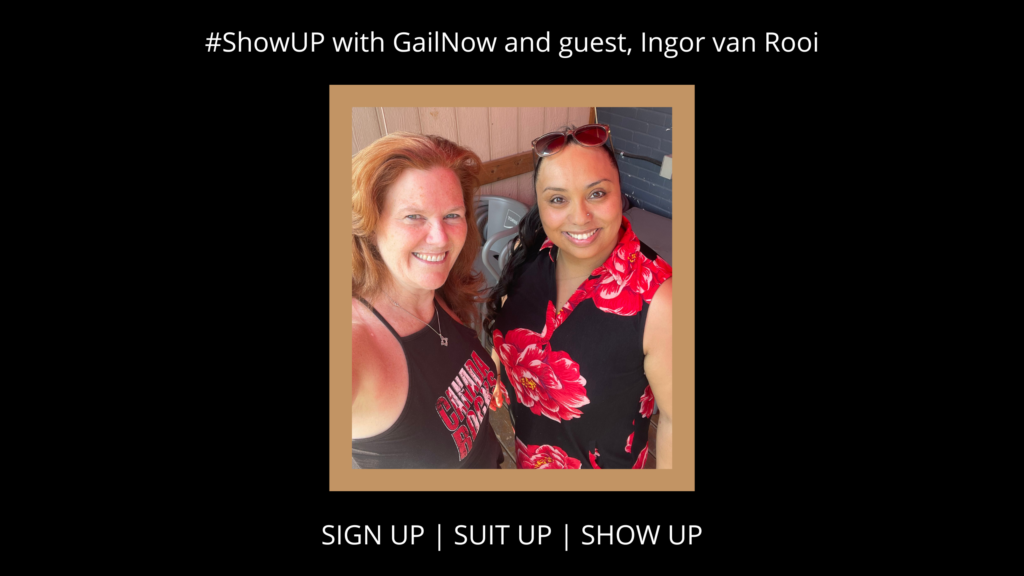
SUMMARY KEYWORDS
linkedin, people, talk, post, content, katie, connect, lurker, anger, connections, person, comment, algorithm, share, day, thought, curiosity, manufacturing, inger, reach
00:24 GAIL
Well, hello, everyone. Well, I decided to show up in my own historic garb, which is Scottish because today is St. Andrews day. So coming from good Scottish stock, I wanted to do a little bring on some bagpipe music. And well, I just wish everyone a Happy St Andrew’s Day and I’m looking forward to January and Robbie Burns day. And if you check out my LinkedIn post today, you’ll see some information about St. Andrews day. And also when I gave a keynote talk about my Robbie Burns connection and the branding of the bard. Well, welcome. So my name is Gail Robertson and I am Chief curiosity officer with gale. Now, I am super excited today because well, for those of you who aren’t aware, my focus is on helping manufacturers both tell and share their story. And it’s using curiosity as the tool that helps us get there and helping people to sign up, suit up and show up. And my guest today is someone well, this is basically about showing, not just telling about the power of networking, the power of connecting, and the power of finding people to help you do things sometimes if maybe that’s not your expertise, or maybe it’s a time issue. And you need to make sure that you are building out that network of people that can help you. So we’re going to be showing not just telling because when I share this story and the person that’s going to come on screen. This person definitely understands networking, connecting, and also the power that is in Linked in. Now while we’re on a few different platforms, and while I’m really focused of late, a little bit more on YouTube, I do understand how powerful LinkedIn is and how it can connect to some other platforms as well. So I’d like to know, welcome everybody in our studio audience and I also want to welcome my very special guest and if I had a drum I’d say drum roll. Welcome Inga. Oh, oh so great to have you and Inger is someone who wears a few different hats. She helps behind the scenes on my show. She helps behind the scenes with LinkedIn and we work together on some manufacturing projects. And definitely Inger has a specialty in the area of helping people get started on LinkedIn as well in Both coaching and helping guide them. So before we start anger, let’s go over to the studio audience. Let’s see. Well, you’re there. Hello. We have a LinkedIn user. That is that. Hello. We have Whitney. Oh, Hello, friends. Yes, Whitney, so great to see you. You know, when you weren’t here, I think it was last week. It was like, where’s Whitney? Whitney, just now she shows up as an amazing person. So she has Scottish heritage too. Well, there you go. Maybe we’re related way back in the Scottish world. And Katie, she says, Hello, Katie. We’re overdue for an Instagram, FaceTime, or whatever. Because we often get on there and have interesting conversations, don’t we, Katie? All right. So um, well, let’s start with, you know, anger. And I. Well, anger, do you want to maybe share how we first met and the connection? Do you want to?
06:03 INGOR
Yeah, sure. It was way back. Way back when I really first started showing up on LinkedIn. Not long before. And then I was connected to someone who brought me into a networking group that was about manufacturing. And I remember thinking, during the first, the first visit that I had with him, I thought, What the heck am I doing here? And I had my camera off, for most of it. Because I just kept thinking, I don’t think I fit in; what is the point of being here. And, you know, they became like my family, really. And through Sam, who was the host, he’s the one that brought us together. And I remember, you know, our first meeting and how I just felt that we clicked. And it was awesome. And just all because I really got out of my comfort zone.
07:17 GAIL
Right now, there’s a little bit of a freeze there. So I don’t know, maybe because it’s the cold weather? I don’t know, it froze a bit. But yes, it was and it was an ERP call. And I think we both were in that meeting going. Like, I barely know how to spell ERP. Yes, it was definitely a great connection, because we jumped on a call, and then we ended up starting to work together. And so that’s kind of why I wanted to start with that call or with that story is often, you know, people get into social media, or 10, things like that. And, and that is their goal, I’m gonna, you know, I’ve got to get business. And we both were in there. That was not that we were just interested, we were both curious about what was happening, and had no expectation. I think of, you know, at that point, really, whether I was at that point, you were doing more admin work and have gone on to grow your business and go down different routes. Because of curiosity, we’re going to talk about how one of the things that I started to talk about with this, my future project will be looking at the power of curiosity, and curiosity has so much power when you use it, when you embrace it. Wow, it opens up so many doors. So we were both curious, we landed in that group, and we started doing work. So how does this apply to manufacturing? Well, we’re going to talk about that today about how when you sign up, suit up and show up, use curiosity, you know, you will both find solutions sometimes if to your problem, but you will also find people that may need that you may be providing solutions to and you just if you go into it with that approach and attitude much like you go to a trade show much like you go to an event a networking event, the same thing kind of happens in in the LinkedIn world. So yes. So in terms of let’s go back, because a lot of people may think you know, someone like yourself, Oh, well, it’s easy for anger. She’s, you know, out there posting and LinkedIn and it just comes easy to her. Let’s go back to your origin story of how you got on LinkedIn, because I didn’t know until earlier today. That story, which is interesting, how you came on to LinkedIn.
09:48 INGOR
Yeah. I remember back in 2011, actually, somebody came to a meeting with my boss, and he and I in To acted, emailed, called, and then met in person. And after the meeting after we met in person, he sent me an invitation to join LinkedIn. And that invitation sat in my inbox for a while because I thought, What am I going to do on LinkedIn, I just, I, you know, just recently I’ve started a new job. And I really didn’t want to jeopardise that. I didn’t want my boss to think that I was looking for work. So I just, I sort of just left the invitation there. But during a conversation with my boss, maybe a week or two after that invitation came to me. I told him that, you know, this person, let’s call him Bob, Bob invited me to join LinkedIn. And I didn’t, I told my boss, because we had an honesty between us. And I just said, I don’t want to join because I didn’t want you to think that I’m looking for work. And he said, No, LinkedIn is more than that. It’s all about networking. So come and join the fun. And you know, and connect. Even my boss actually told me to connect with him as well. So
11:14 GAIL
and you know, that was right around 2011? Yes. So that would have been probably right when things were definitely shifting, because at one time LinkedIn, if you went on LinkedIn, as soon as you saw someone on LinkedIn, that was kind of all they’re looking for work. I remember that exact same. Same thought. And I want to go to a couple of comments here before we go any further because I know what Whitney said she was Miss last week because she took the day off and saw black Panther with her husband. So that was just before the US Thanksgiving. So I had decided, yeah, go ahead anyways, but Katie said, “Did someone say Irish?” We said Scottish, but we’ll get to the Irish. Don’t worry, we’ll wait. St. Patty’s day, that’s when I can wear green. So now, okay. She also said, I started to hate LinkedIn. ” Now, I want to address this because there’s, I think, because the next thing she says, “Jumping over to YouTube because of LinkedIn glitches.” I think we need to separate LinkedIn live and LinkedIn for networking. And whatever is going on with LinkedIn when it comes to live. I’m not sure they seem to be having problems. But it doesn’t take away from the power of LinkedIn as a networking opportunity as a place to connect and post. So I hear you, Katie, a, I think, without putting words, no, I think that’s what you mean that it’s like, it’s because of the live glitches. And that’s why, you know, for video and, and live, I’m switching more to using YouTube as the main platform for discussion, but a good point to discuss and also, you know, anger, and I talked with this earlier, too, is that, you know, each platform in social media has a different purpose, different use, and some of these people put, you know, I know people that say they hate social media, but then I say, Well, you just spent all this time on YouTube. Well, that’s different. Okay, that’s social media. So, um, you know, yeah, so maybe we can talk a bit about the different platforms, and what are some of the highlights about LinkedIn that you’d say is particularly good for people in manufacturing, but also, maybe other people as well, that might be listening? I know we have some manufacturing people, it seems like we might have some lurkers out there that aren’t manufacturing, per se.
13:36 INGOR
Yes. Well, I want to point out that, you know, LinkedIn is the most trusted social media platform in the world, specifically, because people feel that a source of information that comes from LinkedIn can be trusted. Yeah. That is there is a major stat. And then when you think about it, there are more than 800 million users on LinkedIn worldwide. So if you connect with a few, just a few. There are so many people that you can tap into so many different communities that you can tap into and connect with. So yes, there are more than 800 million users worldwide. And 80% of those people, four out of five of the LinkedIn users are decision makers, so C level executives, and they are the ones that will make those decisions to use your service or to buy your product. So it’s important to be on here for out
14:49 GAIL
of five or decision makers. That’s amazing. And let’s look at this that I always find is probably maybe one of the most powerful, we had it at 1%. And over the years, it’s gone up a bit. So can you talk about this?
15:11 INGOR
Well, think about it like this, it says only 5.2% of users share content. Right? So if you do, you definitely stand out. If, if you stand on a podium, and you start speaking, that’s how it is, when you’re sharing on LinkedIn, because at least a few people will see what it is that you’re talking about. And the best thing about LinkedIn is not just your first connection, see your content. Because if your first connection sees your content, and they interact with it, then they have connections, these first connections will see your content, which are your second connections, right. And it can even be seen by third, third connections. So you have an it’s an, it’s really, if you don’t use LinkedIn, there’s so much untapped potential of reaching the right audience.
16:13 GAIL
And you know, this that always, and sometimes I have to go and there’s a new study, the reason we updated this, and I will say one thing, you know, from working with anger, and one thing we’ve talked about when you go to someone that has an area of expertise, you know, keeping up on these new stats, keeping up on trends, we’re going to talk about algorithm in a few minutes. But, you know, whenever I see this stat, I always like going, really, really, but when I think about K, how many people do I see posting in my world? And it’s no, you think about all those millions and millions of people around the world. So if only 5.2% share content, what are the rest of the people doing?
16:57 INGOR
Right? They’re watching, they see what you’re doing. There are so many people who lurk that you don’t even realise that they see your content. I’ve been privileged enough to actually know that there are people that lurk because they send me DMS. I say, Oh, thank you so much for posting this, for being vulnerable, for being authentic and showing up sharing your journey with us. And they’ll reference something that I know that I only put in a post. Right, I know that they didn’t engage with that content. But at least I’m getting to know that they actually even though they didn’t engage with it, they have seen it, and it has impacted them.
17:49 GAIL
Now, you’ve also had I understand clients that have given testimonials about since you’ve been helping them on LinkedIn, they’ve had what happened. So this is you’ve come along, they weren’t necessarily having a profile weren’t that active, you came along and worked your magic. And then what happened?
18:15 INGOR
They can’t, doesn’t God seem like they’ve gotten more eyes on the profile on the content, and made connections outside of, you know, the niche market. And, you know, a lot of us are really afraid to go outside of that niche market. But you know, let’s say for instance, if you’re in manufacturing, and you’re connecting with someone who’s in marketing that’s outside of your niche market, yes. However, they may have people that they are connected to that aren’t part of your niche market. So you have to remember that LinkedIn is not just about connecting people with people, right? It’s so much more than that. It’s connecting people with, like Michelle Janae says, it’s connecting people with ideas, people with opportunities, and people with people.
19:13 GAQIL
Yes, yeah, that is for sure. There’s something I was gonna ask about. I lost my train of thought there for a minute about oh, let’s see, well, let’s jump into algorithms to like, come back and remember what I was going to say. So you know what I did, I started to look at comments and then I got thinking and then I went down squirrel. So I lost my train of thought there which happens because we’re live.
19:40 INGOR
Yeah, it happens.
19:43 INGOR
Specialty, my brain has lots of good to talk, but i It’ll come back to me when I’m gonna because there was something as you’re talking, I was like, Oh my God. I remember asking about that. But let’s talk about the algorithm. Oh, I know what I was gonna say I remember this story because it ties into manufacturing. So I was at a trade show recently. And I was talking to this, you know, up and coming company was a newer company. And I said something on social media. He goes, Oh, yeah, we don’t really, we don’t do social media where I’m at. Okay, so I was talking to him, and then he, I said something about LinkedIn. And he said, Oh, yeah, well, we, when we did this post on LinkedIn, I said, Oh, I thought you didn’t use LinkedIn, oh, we’ll post periodically. And I’m like, okay, and he says, Yeah, we got like, a 500 million, like, some mega million project. And I was like, what I saw I said, I thought you didn’t use? He goes? Well, yeah, okay. Yeah, that so I think that’s the thing, people sometimes don’t see that. And it was, again, it wasn’t anything that someone had posted, they had seen this post, and they didn’t even post that often. And I might be wrong with that 500 million, maybe it was 50. Anyways, it was a lot of money. It was a big deal they got so but the the point here is that because they were posting even not that often, someone reached out to them, and they secured a deal. So again, anyone out there that’s not posting, you’re leaving money on the table, because there’s going to be someone else that posts and they’re going to see them. And they’re going to go to them for business, I’m going to take the hats off, it’s getting a little scratchy. And plus, if anyone tunes in I was wearing this hat for because it’s St Andrew’s Day today. But I’m going to take the hat off for a minute. Plus, it’s getting a little hot.
21:38 GAIL
So I often think about analogies, right? And I think that having a LinkedIn account, and just lurking, you can equate it to deciding to go to a trade show. And just standing against the wall and watching everybody talk and network. That’s basically what you’re doing. And you know, it’s almost pointless, to really go to well in East Point is to go to a trade show. You invest the time you invested, you take the effort and you go there. And then do you just stand and watch everybody else, make those connections network, talk to each other, and probably do business together too. Right? So that’s what you’re doing when you show up on LinkedIn. And all you do is scroll.
22:34 GAIL
Yeah. Now you may be if you’re looking for a solution, that’s great. But you’re if you’re looking to actually help people with solutions, and that’s, that’s a really key part of LinkedIn is you know, you can show not just tell and as I said at the start, I help manufacturers show not just tell their story, because people want to see that content. And you know, you can even just do a simple post about a day in your life or talk about something you do. Now, I hear this a lot. In manufacturing, they say well, oh, everybody, everybody does that. Or Everybody knows that. I said yes. But not everybody is talking about it. Not everybody’s posting it. So if you’re the only one posting it. And I learned this when I was at trade shows sometimes because I’d say okay, here’s our three key points. And they’d say, when I worked in insurance, well, yeah, but everybody offers that. I said, Yeah, but not everybody is celebrating it. By the way, I celebrated it for me, but it’s also about that show, right? You have to show up and believe in it. And if this goes back to that Dr. Seuss thing, too, right? Is that no one can be exactly you? Yes. So everyone pote you and I could we’ve gone through you and I could do the same kind of idea. And it’s going to be presented very differently.
23:57 INGOR
Yeah, exactly. It’s crazy. And as long as you’re showing up as you and not wanting to copy somebody else, right? You need to develop a strategy set for yourself. Because you don’t want to become connected or even develop friendships and relationships based off of falsities you want because you know eventually the truth will come out right? So you might as well just be yourself.
24:32 GAIL
Everyone I’ve met so far, including you when we met up in Toronto, but when I’ve met Ray’s I got to what I met David Chrysler said to me Oh, Damon, Damon Pustaka everybody is exactly what they what I’d expect them to be how they show up online how they show up in video. They were to a tee like, at no time did I go? Oh, they all said Yeah, but I was crazy as they thought
25:02 INGOR
Yeah, and let me let me read you the quote that you referenced it says, Today you are you that is true then true. There is no one alive who is youer than you.
25:13 GAIL
I love Dr. Seuss. And did you know the actual pronunciation of his name is Dr. Soy ice? My son did a project and sure enough, I want to research it. There’s a whole history of Dr. sites, but his name is pronounced Dr. Seuss. So it’s amazing how sometimes the interesting bits of information that I gathered in my head my curious brain sometimes I never know when you’re gonna need that. Just throw out the right people. That’s not a trigger. Yeah, go search it. It is. Okay, let’s talk about Well, before we go on, let’s go to some of the comments. So Katie has said, yeah, she said that LinkedIn has been disappointing. I miss being able to interact on that platform. I liked the reactions in the comments. Yes, with me. Yes, Whitney. That’s Whitney. Sorry. Yes, sir. I got my company mixed up. And then Katie says there’s many issues with LinkedIn as a platform, I just basically have a lot to do with the bugs. itchy. You can tell when you look at impressions as well, yes. impressions are important. But so is engagement we’re going to talk about getting to Agra. Posting is so important. Yes. And let’s talk about let’s take that as a jumping off point. Thank you, Diane, that is definitely step one. And I want to stress again, that when and not what worries you most anger, but I, I’ve watched you do this, and I’ve seen the testimonials and heard feedback. So one of anger strikes is that she starts at the ground level of people, gets some comfort, gets their page optimised, and then does it in small steps. So as opposed to just a lot of the training in LinkedIn sometimes comes in, like they expect people to know more than they may know. So there’s a fairly steep learning curve, especially in manufacturing, just because they’ve done so much in person, right. So I, that’s one of the things that I think is a real strength of yours. And anger is extremely patient and a great coach with people, I just want to say that much more than I am. Just do this. So, in terms of posting, and then let’s talk a little bit about engagement. And I know that recent report that just came out and we can either maybe drop a link to that, because that’s one thing you keep up to date on as you know, new reports that are coming out. So what did it say about engagement that you want to also have your company pages three times better? Engagement and only posting? So do you want to maybe add to that about the power of engaging, and beyond just posting?
28:10 INGOR
Yeah, it is so important to engage in other people’s content, not just responding to comments on yours. And the reason is, because this is how you get to see how you build those relationships. It’s like, you know, I do have analogies about lots of things. I will say they love analogy. But it’s like you know, living in a neighbourhood, and only just putting in your earphones, not looking at people, not greeting them when you pass them. Just, you know, focused on getting home and getting to work and getting home and getting to work and really not building those relationships. Well. What happens at 10pm or 11pm? You need, you’re doing something and you need salt? What do you do? You can’t go to those people because you haven’t built relationships with them, right? And so for LinkedIn, it’s so important to really communicate with the people that are in your circle. And I’m talking about engaging in my content, responding to the comments on your posts, and also reaching out through the DMS and taking it beyond this platform because that’s how you grow and learn. Because when you’re exposed to different kinds of people, people that have different backgrounds to you people that have different experiences than you have. When you are exposed to those people you actually grow. And you learn more, right? Yep, so that’s important. But for LinkedIn for sure. Engagement is key and When I’m speaking about engagement, I’m not talking about great posts. And thanks for commenting when somebody comments on your post, that is not what I’m talking about, you need to show up authentically. And you rather take the time and comment on five posts authentically, then copy and paste the same response for 25 posts because that doesn’t work. And to me, I just feel like if somebody does that to me, I feel like you know, I’m just the number. I’m not being seen. They don’t they don’t know me. And they’re not trying to know me, either. So let’s say hello to awesome friends. Resnais recce. Thank you for tuning in. Nice to see you. We trust that you’re doing well.
30:56
Yeah. Great to see. Great
31:01
lady.
31:04 GAIL
And then before we get off from singing. And then we have the king of process here today. Hello, King. Your Majesty. Nice to see you. Your Majesty, when he says good Oh, is greeting Russ and Ross is 1000. Thanks to both of you, gilding. Thank you, Ross. Nice to see you here.
31:30 GAIL
And I see we still have some so people are still seeing on LinkedIn. And then Katie’s jumping in with Ross and yeah, so that’s great. I love the analogy, the neighbour because that kind of works as in life, you know. Now I’m at the polar opposite of that. Like I talk to everybody in line, my neighbours. I remember when I first moved into this house, like I needed an onion so I don’t know what it was. So there were some people on the street here. So I went to my one neighbour, and they didn’t have to go across the street. I’m not okay. I knew my neighbours a bit. I’m like, I know them. I go over the next thing they came up with. Do you want to read any yellow on you know what I? Like? They’re like, whatever you need, whatever you need. And it’s a very culturally diverse community. Right. So anyway, let me just take one No, take more than one, take more than one right and I come over. So yeah, it is. It is about making those connections. And then, you know, all doing that opens up doors. Yeah. So if you’re in a, and I’ve seen this in manufacturing, because a lot of salespeople will go to a trade show, and they are talking to people. And it’s you kind of can do the same on LinkedIn or on any social media, really, but it’s about you know, giving that value back. So I really liked that analogy, because I could see that you know, headphones in head down. You don’t talk to anybody in your world. It can really change when you look up and smile and say hello to strangers, right? I don’t talk to strangers. No, no, no.
33:09
Yeah, I can imagine.
33:13 GAIL
Even if they don’t want to talk to you, it’s like Hello. People down the street. You will have some fun sometimes going, Yes. I have fun. We got to what are the benefits of us? We’re together and we have a lot. And I think it’s another advantage and a lot of the people that are in this in our chat today are people that we do know. And I wonder if there’s you know, I’d love if there’s a lurker out there that would just say, Hey, I’m a lurker. I just want to say I’ve never commented before. Yes, please, please come on. prove this show. Don’t tell yourself. Say I am. You’ll get a price.
34:00 INGOR
Oh my gosh.
34:06 GAIL
So while we’re waiting for the lurker to drop a comment ladies at the mall Have you ever been Yes, I don’t do sir. I’m like no, no, no, but sometimes they will. Yeah, no, no, I wouldn’t I couldn’t do that job because okay, maybe I could but
34:25
yes, you could
34:29
I want there’s a difference right? Yeah, cuz I wouldn’t really want to chase people down I would be
34:34
in all honesty. I can actually see that the people watching on LinkedIn are not commenting.
34:42 GAIL
Okay. David says he’s a lurker now he’s I see as all the laughing faces afterwards because yeah, David is definitely not David is a producer David. Well, David produces listens. comedies? Just kidding, of course networking in the comments Exactly. I’ve met so many Yes. Let’s leave this. This is so true. I can tell you the number of people I’ve met and connected with because of watching a podcast and watching a live show commenting on other things I’ve done. Oh, we got CES, now we are competing to be a lurker doing the five this prize. I love networking. I don’t know who that is. It says LinkedIn users. So send me a DM and we’ll figure out the So, yeah, so the other thing that is really cool to do when it comes to engaging is go and comment. So say, say David has liked someone’s page or comment that I don’t know that person. I will then go into that comment of that person and comment, because then what happens is it’s like, it’s like, meeting a whole bunch of new people. It’s like walking into a room with oh, I don’t know these people as well. But I know that David knows them. So it’s kind of like Well, David knows I’m I’m kind of curious to see and oh my goodness I have that opened up doors as well because it’s like, hold my Oh, so David said let’s go Joyce Winky. Okay, is that Joyce’s is Joyce, the LinkedIn user, David? I think so. I’m just I don’t know. Joyce. Joyce was my mom’s name. So I love that name. Okay. Very cool. Okay, Joyce Okay. If you’re the lurker today. Holiday CD featuring sweet. That was gonna be I would say get up. We’ll get to sing. I’ll maybe create a tick tock specifically for someone who wants me to create a tick tock parlour.
36:51
No, do it. Do it.
36:54. GAIL
It’s funny, I was just talking to someone about tick tock. And they didn’t because they were new to it. They were new to tick tock and had never seen it before. And wondered who I was doing these duets with because they were like, you know, big accounts and that and they were like, how does scale? Nope. Like, did she see them somewhere? So okay, Katie, we would love to do a duet with you. That’d be fun. Yeah, I’ll stay off Tik Tok? Well, I will come back to tick tock again one day because tick tock is another fascinating place to see I should be a song David, well, maybe maybe not. Okay, let’s jump over and talk about algorithms. So I used to think, and I’ve heard this that well, algorithms are kind of a cold way of looking at social, you know, it sounds like you’re just trying to. Yeah, trying to rig the system or something. And it sounds like, oh, I don’t know, is it? So let’s talk about algorithms. And what does that all mean?
38:03 INGOR
Well, all social media has an algorithm. And basically, what it means is, how many people actually get to see your content, and how they end? It depends on a lot of things. I actually, I’ve heard so many different things about their algorithm, including somebody that says that this person is quite the LinkedIn guru, and he said that the algorithm changes multiple times a day. So, you know, I don’t know. Is it something that we should be doing? Because it does feel calculating? Does it feel cold? It does feel inauthentic. Right. And I think the jury’s still out on that question. Because, yes, you know, chasing the algorithm, or playing to the algorithm does allow your content to be seen by more people. It does allow you to get more engagement. But is it real? I don’t know.
39:20 GAIL
You know, I think we talked a bit about this earlier. And I think how I see it is that you don’t want to, I mean, if you’re only playing to the algorithm, and you’re doing everything in a calculated way, it’s a bit like only making friends with people that you’re going to get something back from right. I see algorithms as a piece of the puzzle. You want to, you know, put out content that your clients or prospective clients will need. The one thing I’ve learned about really working with YouTube and you know, how do people have said says there and have done well and have become great providers of content is that they, there is a list listening to what like the questions people are asking because there is things like keyword research and what are I mean, and there’s some real basics like ask your client, what are the what are the top questions your clients? If your clients do certain things, you know that there’s lots more people out there. So if you’re answering those questions, technically, that’s kind of playing to the algorithm, but you’re doing a service to, to clients and future clients. So yeah, I, I think that’s an interesting approach that, you know, you don’t want to only play the algorithm, but the algorithm does have some tips, because we do follow some of those things. So let’s go through some of the tips that, and this latest algorithm algorithm research report that just came out, talked about some of these things. So apparently, the first 90 minutes after you post, let’s talk about some things you can do those first 90 minutes after you post.
41:08 INGOR
They say the engagement in the first 90 minutes is usually important to kickstart the growth of a post, so some elements that you can get more that you can use to get more eyes on your post from the first second is we need to first increase our followers. So in creative mode, creator mode allows you to allow other people to be able to follow you more right? I see Katy actually asked a question and I want to read her the answer, because I’ve seen it. It says creative art can help you grow your following on LinkedIn. When you switch to create more your reach will be amplified. And your primary profile action buttons switch from connect, to follow. That’s why you know, when somebody goes to your profile, they only see the following but they can click on the ellipses, and then be able to connect that way. It says this makes it more likely that people will follow you since it eliminates the need for you to approve the connection first. So that’s the benefit of creative mode. And yeah, like get more people to ring your bell so that they can get notified via LinkedIn when you do have content that gets posted. Right. And you need to respond to all comments with your own comment in these first 90 minutes. Sounds like work, doesn’t it? Yeah. But it pays off.
42:51 INGOR
And, and you have seen and we have discussed this because you have got feedback from clients you’ve worked with. And I think this is really key that you know, and it’s hard to sometimes put time into doing some of these things. So there’s a reason that you know, the skills you bring to the table have been around, you will stay on that you’ll do the research and the legwork, because it will help expand the reach. And I want to just add about that. Because I guess Whitney said, so creating a more mode is more about gaining a following not making connections. Yes and no, here’s where I found it to be helpful with the following sometimes to me, it follows sometimes will be like a wave. So sometimes I’ll see that someone’s followed me, and then I’ll go look at their profile. And then I’ll send them a connection request because I’m like, oh, okay, they sound that sounds salesy, and it’s kind of like a shortcut . To me, it’s like a wave. So I sometimes will follow people and the same thing will happen, because it’s almost like you’re giving if I’m following someone, I’m sort of saying, hey, I’m interested, I want to I’m interested in saying hello, right. Yeah. So that’s a benefit, and it has led to, you know, a connection that might be of interest. So, yeah, you know? Yeah, I think it should always be about the power of making connections. And then going back to looking at, you know, these algorithms, these tips, because I know cases where you must reply to each comment within 90 minutes. Question, Mark. You know, there must be no, I mean, it, all of what this report says is that when they’ve applied, when they’ve researched it, and done all the data from all the studies, they found that when people did those things, it made a difference. Now, you might not always be able to reply to every comment. And I don’t think replying to the comment with
44:40
no, it’s within the first 90 minutes of posting and posting. So if you get four comments, you need to respond to each call base with your own. Yep. No,
44:54
no, no, no, no, no. Yeah. That came from a report. Thank you, Katie for that clarification, this was from This algorithm research report that talked about Yeah, so no, yeah, you must or you will get kicked off LinkedIn remote. That’s the way it is. Katie
45:12
helps your content reach more people if you do. Yeah.
45:16 GAIL
The other things, we talked about reposting and sharing, because that was new. That’s another new and again, all of the things we’re talking about right now, this is all new information, everyone that’s come up with this report. And it’s based on studies that have been done around the algorithm and how LinkedIn works. So you don’t have to do this. It’s just tips. And the reason I want to go on to talk about this is this is why you hire people to help you do things like you hire, you know, accountants, you hire people in it, because you want them you want to at least believe that they’re going to keep up to date on things, any new updates on you know, if you’re hiring your accountant or your bookkeeper, like my bookkeeper or accountant, I want them to keep up to date and all the changes with Revenue Canada, because I don’t want to, I don’t want to worry about that. I don’t want to go to their website. So I’ve hired people to do that. And that’s the same with what we’re talking about today is that it’s about keeping up to date on changes. So okay, let’s talk about reposting and sharing and the change.
46:18. INGOR
So before, if you reposted somebody else’s post or shared someone else’s post, that wasn’t good, but now studies show that it actually does reach people. And it does reach more people than it did before. So that’s a good thing. Because you know, sometimes you don’t have time to, to create your own posts from scratch. Right? You want to create something with substance, right? So at least if you repost or share somebody else’s pose, make sure that you put in your own thoughts first before sharing. Don’t just share it.
47:04
Yeah, no, that is, that is really good. Yeah. And so that’s a change, you know, use and ideally, and I’ve done this as I’ve taken content from someone else’s page, but gave them full credit direct to them back to their page, but I actually did my own post and quoted them in my in my post, I think that’s generally would be likely the ideal. But if you don’t have time, then you can reach for a poster.
47:29
use LinkedIn like original content. So you know, you get more eyes on your content if you post something original, as opposed to sharing, or copying and pasting somebody else’s post.
47:43
And speaking of content, LinkedIn does like content, because that’s the whole thing about being on social is that they want you to be social, they want you to share, they want engagement, this is all like, I mean, just like, again, if you’re going to a trade show, if you’re going to an event you the idea is to not everybody stand there, no one talked to another. It’s all about connecting. If you go to a conference, you want to hear from good speakers, you want to hear from people with their own ideas and content. So no different than on LinkedIn. Yeah, they did. Oh, go ahead.
48:18
Can we talk about why? Yes, we share content? What’s the point of that? Can anybody let us know what their thoughts are? On? Just why is it important to share content? Because a lot of us, we shy away from that, right? For the longest time, I didn’t post on LinkedIn, and I’m talking about the years. Four years, I haven’t posted on LinkedIn. And you know, because you’re afraid of what someone’s always gonna say, or what they’re going to think. If they read your posts, right. So drop us a comment and let us know what you think is part of the reason why we need to share content. Dave, I think Katie probably had to go to her webinars. So piece by piece. Yeah. And Dave says LinkedIn worked great for about 30 minutes. Hello, my YouTube friends. So Oh, well.
49:28
Let’s go to Katie’s comment because she said, Oh, wait a minute. It’s yours. Yes, you were listening. Katie. You get a gold, you get the gold star for today. Yes. i I have said that this part of my signup suit up and show up is that you have a duty to share your ideas. Share your knowledge and yeah, yes.
49:53
Oh, she says Peace out if she had to come into
50:00 GAIL
Yeah, and, you know, you do the best you can. And it’s, I always say it starts somewhere just like you. People have heard me say this, even if you do one post a month, you’re gonna be further ahead than your competition. So start somewhere for some people, it’s once a month, some people, maybe once a week, some people, maybe twice a week, like you have to set I would say, set that bar so that you can be consistent. Consistency will always win. And just recently I was in a spin class at the gym. And one of the things I liked was going full tilt and all this and the instructor said, yeah, no, it’s better to stay consistent throughout the class. Because what happened midway through the class, I thought I was ready to pass out, right, because I put so much into the first half of the class, my tank was getting empty. So yeah.
50:55 INGOR
So let me share my reasons for why it’s important to share content. The first is, you know, when you’re on LinkedIn, and if you want to build your community, there are certain things you need to do, right. And I have three, I have three guidelines that I follow that I teach, and they are connect, communicate, collaborate. So when you share content, it’s part of the communication tool that I teach people. And sharing content allows you to build relationships, it allows you to build that K L T, that we always talk about, which is known like and trust. So when you share content, you build relationships, because you allow people to get to know you as a person, to like you, and then to trust you. So that’s part of the reason why we need to actually have that where we share content on LinkedIn. The second thing is, we want to build brand awareness. And even if you’re not, you know, talking about what you do, or the work that you do, or the company that you work for your brand, is not just that your brand is you as a person. So if you believe in positivity, and you share content about that, that’s your brand that allows people to get to know you. So you, you grow your build your brand awareness. And then when people like you, you build and grow your brand loyalty, because now people become loyal to you because they see that you are authentic, they see who you are. And that is through your content, and also through your engagement. But content is key when it comes to that.
53:02
Yeah, it’s true. I love that answer. Those are very true that you were, you know, again, if you’re not talking about it, and I’ve said this many times if a tree falls in the forest, and no one documents no one talks about it. Yes. Did it happen? And that’s kind of how it is with our content.
53:22
Yep, exactly. Yeah. I know we need to wrap up soon.
53:28 GAIL
So let’s also say one of the things you quote from this study is personal stories, including selfies. Yes, yes. Yes. Well, that’s part of my brand. See, that’s the thing is for me doing selfies is now when I go to various places people always ask me like, Who are you doing this like it’s now and plus I have an it is a bit of a control that because I have full control a photo and how it’s going to be other people have given my camera to them. And next thing you know, your heads are cut off or it’s like bad lighting so I can look and I’m like I know exactly what this photo will look like.
54:05
So yes, have a look at this. Oh, yes,
54:09
let’s talk so that is when I was on my way up north. I’m very Oh, casual. Well, I was on my way up north and I stopped in Toronto and we had coffee and a treat together. Yes. So yeah,
54:26
of course we had to take a selfie of course
54:29
He had to do a selfie . I have a video I’ve never posted. I still have a video of us. You know, remember the Wasp came in everything to make that video may resurface one day just warning you oh okay, I want to fit in okay. How do you act because I always ask all my guests this: how do you exercise your curious mind?
54:52
Who really the different ways that I do it,
55:03
We can talk about the public.
55:07 INGOR
So the first one is, if I come across a concept or a word or something that I don’t know much about, I research it. And it can be about a person to my husband that actually often says to me, how the heck do you know this? But I’m like, this Google’s my friend. That’s why, you know, I find out different things about people, you know, celebrities or people that are interested in things like, you can find a lot online. And then, another way that I exercise my curious mind is by accepting people for who they are, you often speak about, you know, be curious, not judgmental. And I exercise in that way. Because I try to, I strive to accept people and not not judge them if they’re doing something outside of what I would do. Because we all have our own standards. We all have our own ways of doing things. And so I don’t judge them. But I’m curious sometimes I’m just curious as to why. And I’ll ask why.
56:27
I love that. And, you know, one of the things we’ll be doing more work on and talking about is, let’s put that quote up. Yes. I want to say this. Thank God for anger. And then I get so angry. And then it’s like, oh, yeah, and guilt.
56:50
Secondary billing.
56:53 GAIL
It is, you know, the project that that I’ve been discussing is about, you know, how everyone may need to exercise curious minds. So this is a little peek, a little hint about what awaits is how we can act, how we can all exercise our curious minds even more, that will help in all areas of life. So states are going to be
57:16
I know we’re approaching the hour but didn’t want to ask me about my recent visit to a trade show.
57:22
Oh, yes. Yes. Let’s okay. Yes. Forgot about that. Thank you recent visit trade show, because you didn’t want to go to that or you’re
57:30 INGOR
- So I’m used to it. I mean, and I wasn’t before I wasn’t used to doing things online, I had to step out of my comfort zone and learn, learn how to show up online. But as a result, I haven’t done much networking in person. And I remember one day, I just seem to get on the phone. Oh, Gail, thinking about going to a network like a trade show. I should look and see what is available around me. And Gail, the very next day sent me one. It looks like I’m not ready. And she said no, just go. And I actually want to think I was being smart. And I called a friend and I said, Hey, this trade show is happening. Would you like to go with me? And me, me, me because we haven’t met in person by Katie. And he said yes, for sure. I’d love to, but I have an appointment in the morning and I’ll come a little bit later. So okay, off I went to the train show. Well, I got there and I was like, I don’t want to go inside. Like, what am I gonna do? Yeah, what am I gonna say to people? And then, and so I decided to wait for my friend. And I waited an hour. And I was still waiting. And then he messaged me to say that he’s not, he won’t be able to make it. And I was like, Oh, crap, like, I can’t have travelled all the way Yeah, and not go in. So I went inside, and I went and I spoke to the first person that I saw through those doors. And this gentleman was very kind. We spoke about LinkedIn, and I told him what I did. And now he sent me a message asking me if I’d like to speak at an event about LinkedIn and the benefits pay off. So you just don’t know what kind of doors can open when you show up online and in person.
59:39 GAIL
That I love that story because that is an example that you know, in reverse, right? You went in person and you rocked it and you know you can do it with ease because you’re so personable. I’ve met you in person and a way to go. Alright, well, I know I’m going to be having you back on as a guest and And we will be probably starting to I’m, we’ve got a few things planned before your end. But we’ll, I’m gonna have you go to the green room and I’ll see you in the green room.
1:00:12
Okay, see oh, wait one last thing here, let’s
1:00:14 GAIL
make sure everybody knows how they can reach you. And that angered Well, I’m gonna say this because I’m just gonna let people know and manufacture to spread the word because anger has had some phenomenal results with people doing that one on one coaching when it comes to LinkedIn. So how can they reach you?
1:00:35 INGOR
Thank you. The best way to reach me is through LinkedIn. Just look me up. There are not many RS on LinkedIn. So you’ll find me, you’ll find my face. And definitely connect and that we know that you are watching and we’d love to connect with me. Thank you for the opportunity to be on your show, Gil.
1:00:56. GAIL
Thank you. Okay, you can go where we go. Okay, thanks, everybody for showing up today. And, you know, Inger is definitely someone that’s made a big difference in my world in terms of, you know, the work I’ve been doing. And you know, if anyone does want to talk strategy, and wants to learn about how they can both tell and share their story and look at their brand, and how to use public relations. And, you know, for myself as well, Chief curiosity officer, but previously, and now, you know, I’m a recovering journalist. So one of my strengths is definitely, you know, helping uncover stories, and also how best to position it. So I’ve also helped companies and people with news releases, and also how to get their story out and what are the best options. So if you want to reach out to me, and then again, Inger also does work with me and works with some clients on that one on one as well when it comes to LinkedIn. So if you have any questions, please reach out. And I will be back talking more about and updating what some of the next things that are in store with Gail now. I do have a few things I’m working on for next year, and it will be focused around curiosity. And so I want to thank everybody for coming out. Thank you, David for the Yes, awesome conversation. Yes, it was awesome. Because there’s so much to learn about how we can connect on social media and especially on LinkedIn. Okay, well, I’m going to head out now putting my team back on and go listen to some more bagpipe music, because I do love bagpipes. And then I’ll be thinking about January, Robbie Burns day. Because two years ago, I did the immortal memory speech that was so fun to work on to sell, learned lots about myself and about the power of branding even as far back as the 1600s. So branding, always been important. Okay, thanks, everybody, and we’ll talk soon



